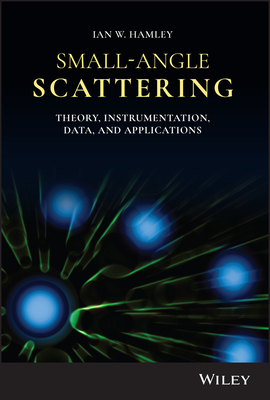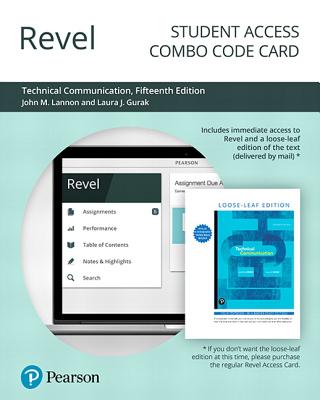AD Hoc Networking (Hardcover)
暫譯: 即時網路 (精裝版)
Charles E. Perkins
- 出版商: Addison Wesley
- 出版日期: 2001-01-08
- 定價: $1,800
- 售價: 6.0 折 $1,080
- 語言: 英文
- 頁數: 384
- 裝訂: Hardcover
- ISBN: 0201309769
- ISBN-13: 9780201309768
-
相關分類:
Wireless-networks
立即出貨(限量)
買這商品的人也買了...
-
 計算機組織與設計--軟硬體界面第二版 (Computer Organization & Design, 2/e)
計算機組織與設計--軟硬體界面第二版 (Computer Organization & Design, 2/e)$680$537 -
 Data Mining: Concepts and Techniques
Data Mining: Concepts and Techniques$2,520$2,394 -
 C++ Primer, 3/e 中文版
C++ Primer, 3/e 中文版$980$774 -
 Introduction to Algorithms, 2/e (Hardcover)
Introduction to Algorithms, 2/e (Hardcover)$990$970 -
 Digital Image Processing, 2/e(IE)(美國版ISBN:0201180758)
Digital Image Processing, 2/e(IE)(美國版ISBN:0201180758)$1,150$1,127 -
 Thinking in Java 中文版 (Thinking in Java, 2/e)
Thinking in Java 中文版 (Thinking in Java, 2/e)$920$727 -
 LPI Linux 資格檢定 (LPI Linux Certification in a Nutshell)
LPI Linux 資格檢定 (LPI Linux Certification in a Nutshell)$880$695 -
 演算法導論 (Introduction to Algorithms, 2/e)
演算法導論 (Introduction to Algorithms, 2/e)$860$679 -
 Sun Certified Programmer & Developer for Java 2 Study Guide, 2/e
Sun Certified Programmer & Developer for Java 2 Study Guide, 2/e$1,830$1,739 -
 PHP & MySQL 完全架站攻略第二版
PHP & MySQL 完全架站攻略第二版$620$527 -
 作業系統概念 (Operating System Concepts, 6/e Windows XP Update)
作業系統概念 (Operating System Concepts, 6/e Windows XP Update)$780$741 -
 Red Hat Linux 9 實務應用
Red Hat Linux 9 實務應用$650$514 -
 ASP.NET 程式設計徹底研究
ASP.NET 程式設計徹底研究$590$466 -
 Java 2 物件導向程式設計範例教本
Java 2 物件導向程式設計範例教本$580$493 -
 STRUTS 實作手冊(Struts in Action: Building Web Applications with the Leading Java Framework)
STRUTS 實作手冊(Struts in Action: Building Web Applications with the Leading Java Framework)$690$538 -
 深入淺出 JBuilder 程式設計實作(JBuilder 9.0/8.0/7.0 適用) (Charlie Calvert's Learn Jbuilder)
深入淺出 JBuilder 程式設計實作(JBuilder 9.0/8.0/7.0 適用) (Charlie Calvert's Learn Jbuilder)$720$562 -
 Java 程式設計藝術 (Java How to Program, 5/e)(精裝本)
Java 程式設計藝術 (Java How to Program, 5/e)(精裝本)$880$792 -
 鳥哥的 Linux 私房菜-伺服器架設篇
鳥哥的 Linux 私房菜-伺服器架設篇$750$638 -
 電腦網路 (Computer Networks, 4/e)
電腦網路 (Computer Networks, 4/e)$800$760 -
 鳥哥的 Linux 私房菜─基礎學習篇增訂版
鳥哥的 Linux 私房菜─基礎學習篇增訂版$560$476 -
 SCJP‧SCJD 專業認證指南 (Sun Certified Programmer & Developer for Java 2 #310-305 與310-027)
SCJP‧SCJD 專業認證指南 (Sun Certified Programmer & Developer for Java 2 #310-305 與310-027)$850$723 -
 組合語言 (Assembly Language for Intel-Based Computers, 4/e)
組合語言 (Assembly Language for Intel-Based Computers, 4/e)$680$612 -
 人月神話:軟體專案管理之道 (20 週年紀念版)(The Mythical Man-Month: Essays on Software Engineering, Anniversary Edition, 2/e)
人月神話:軟體專案管理之道 (20 週年紀念版)(The Mythical Man-Month: Essays on Software Engineering, Anniversary Edition, 2/e)$480$379 -
 Flash MX 2004 動畫搖頭玩 ActionScript 經典範例
Flash MX 2004 動畫搖頭玩 ActionScript 經典範例$580$458 -
 RFID 技術與應用
RFID 技術與應用$480$379
相關主題
商品描述
Description
The complete guide to building ad hoc wireless networks that come together "on-the-fly"!
- Wireless communications without routers, base stations, or Internet Service Providers.
- Key applications: conferencing, home networking, emergency services, Personal Area Networks, Bluetooth, and more.
- Addressing the key challenges of ad hoc networking: Power management, scalability, and more.
Charles E. Perkins, editor, is at the Nokia Research Center, and a world-recognized authority on ad hoc networking. The ad hoc networking techniques presented here are written by their creators and inventors, including Scott Corson, Jim Freebersyser, J.J. Garcia-Luna-Aceves, Zygrnunt Haas, David B. Johnson, Barry M. Leiner and Martha Steenstrup. ![]()
Table Of Contents
1. Ad Hoc Networking: An Introduction.Layer-2 Ad Hoc Solutions.
Proactive versus Reactive Protocols.
Multicast.
Commercial Applications of Ad Hoc Networking.
Home Networking.
Emergency Services.
Personal Area Networks and Bluetooth.
Embedded Computing Applications.
Sensor Dust.
Automotive/PC Interaction.
Other Envisioned Applications.
Technical and Market Factors Affecting Ad Hoc Networks.
Power Budget versus Latency.
Protocol Deployment and Incompatible Standards.
Wireless Data Rates.
User Education and Acculturation.
Additional Security Exposure.
Spotty Coverage.
General Comments on Routing Protocols.
Description of the Material Presented.
2. A DoD Perspective on Mobile Ad Hoc Networks.
The Past.
Survivable Radio Networks.
Other DoD Efforts in MANET.
Other Efforts in MANET.
The Present.
ELB.
GloMo.
IETF MANET Working Group.
The Future.
DoD.
Open Research Issues.
Conclusion.
3. DSDV: Routing over a Multihop Wireless Network of Mobile Computers.
Overview of Routing Methods.
Distance-Vector.
Destination-Sequenced Distance Vector Protocol.
Route Advertisements.
Route Table Entry Structure.
Responding to Topology Changes.
Route Selection Criteria.
Operating DSDV at Layer 2.
Extending Base Station Coverage.
Examples of DSDV in Operation.
Properties of the DSDV Protocol.
Comparison with other Methods.
Future Work.
Summary.
4. Cluster-Based Networks.
Clustering for Backbone Formation.
Virtual Subnet Architecture.
Clustering for Routing Efficiency.
Clustering.
Conclusion.
5. DSR: The Dynamic Source Routing Protocol for Multihop Wireless Ad Hoc Networks.
DSR Protocol Description — Overview and Important Properties.
DSR Route Maintenance.
Additional Route Discovery Features.
Additional Route Maintenance Features.
Support for Heterogeneous Networks and Mobile IP.
Multicast Routing with DSR.
Location of DSR Functions in the ISO Network Reference Model.
DSR Evaluation.
DSR Implementation and Testbed Summary.
Related Work.
Conclusion.
6. The Ad Hoc On-Demand Distance-Vector Protocol.
Unicast Route Establishment.
Expanding Ring Search.
Forward Path Setup.
Route Maintenance.
Local Connectivity Management.
Actions after Reboot.
Multicast Route Establishment.
Forward Path Setup.
Multicast Route Activation/Deactivation.
Multicast Tree Maintenance.
Actions after Reboot.
Broadcast.
Simulations.
Multicast Simulations.
Optimizations and Enhancements.
Subnet Routing.
AODV and Mobile IP.
Future Work.
Asymmetric Routing.
Conclusion.
Appendix A: Message Formats.
Route Reply.
Route Error.
Multicast Activation.
Group Hello.
Appendix B: Extension Formats.
Multicast Group Leader.
Multicast Group Rebuild.
Multicast Group Information.
Maximum Delay.
Minimum Bandwidth.
Appendix C: Configuration Parameters.
7. ZRP: A Hybrid Framework for Routing in Ad Hoc Networks.
The Communication Environment and the RWN Model.
The Zone Routing Protocol.
Routing Zones and Intrazone Routing.
Interzone Routing and the Zone Routing Protocol.
ZRP — Formal Description.
The Intrazone Routing Protocol.
The Interzone Routing Protocol.
Evaluation of ZRP.
Performance Results.
Conclusion.
Appendix.
8. Link Reversal Routing.
The Gafni-Bertsekas Algorithm.
The Lightweight Mobile Routing Algorithm.
Properties of the Protocol.
The Temporally Ordered Routing Algorithm.
Properties of the Protocol.
Comparison of LRR Algorithms.
Conclusion.
9. The Effects of Beaconing on the Battery Life of Ad Hoc Mobile Computers.
Ad Hoc Wireless Networks.
Smart Batteries and Battery Characteristics.
Associativity Based Routing.
ABR Route Discovery Phase.
Handling Mobility in ABR.
ABR Route Deletion Phase.
Effects of Beaconing on Battery Life.
Experimental Software.
Experimental Results and Observations.
Standalone Beaconing at Low Frequencies.
Beaconing with Neighboring Nodes at High Frequencies.
Beaconing with Neighboring Nodes at Low Frequencies.
Deductions.
Conclusion.
10. Bandwidth-Efficient Link-State Routing in Wireless Networks.
STAR Description.
Validating Updates.
Exchanging Update Messages.
Example.
Impact of the Link Layer.
Performance Evaluation.
Comparison with Table-Driven Protocols.
Comparison with On-Demand Routing Protocols.
Conclusion.
11. Summary and Future Work.
Quality of Service.
Is the Client — Server Model Viable?
Connecting to the Internet.
Security.
Power Control.
Other Approaches.
Fisheye Routing.
CEDAR.
A Possible Vision of the Future.
For More Information.
Index. 0201309769T04062001
商品描述(中文翻譯)
描述
完整指南,教你如何建立隨需應變的無線網路,隨時隨地組建!
- 無需路由器、基站或網際網路服務提供者的無線通訊。
- 主要應用:會議、家庭網路、緊急服務、個人區域網路、藍牙等。
- 解決隨需應變網路的主要挑戰:電源管理、可擴展性等。
「隨需應變網路」使無線設備能夠根據需要彼此連接,即使無法訪問網際網路。它支持從筆記型電腦用戶之間的即時會議到必須在最惡劣條件下運行的緊急和軍事服務等各種強大應用。在本書中,該領域的領先研究人員介紹了當今最新、最先進的技術,使網路應用隨時隨地可用。他們展示了最先進的設計和實施技術,旨在使各種移動無線設備能夠立即連接,而無需訪問路由器、基站或網際網路服務提供者。了解隨需應變網路如何利用現有的IP地址,但需要新的協議工程。理解基於集群的網路、動態源路由(Dynamic Source Routing, DSR)協議、隨需應變路由協議、可重構無線及其他方法。最後,回顧每個隨需應變網路的主要應用,包括移動會議、家庭網路、緊急/災難服務、個人區域網路(PAN)、藍牙整合;以及嵌入式、軍事和汽車應用。
查爾斯·E·帕金斯(Charles E. Perkins),編輯,任職於諾基亞研究中心,是隨需應變網路的世界知名權威。這裡介紹的隨需應變網路技術由其創造者和發明者撰寫,包括斯科特·科爾森(Scott Corson)、吉姆·弗里伯賽(Jim Freebersyser)、J.J. 加西亞-盧納-阿塞維斯(J.J. Garcia-Luna-Aceves)、齊格倫特·哈斯(Zygrnunt Haas)、大衛·B·約翰遜(David B. Johnson)、巴里·M·萊納(Barry M. Leiner)和瑪莎·斯廷斯特(Martha Steenstrup)。
適合的課程
網路 - 進階主題。
目錄
1. 隨需應變網路:簡介。
- 運作模型。
- 對稱鏈路。
- 第二層隨需應變解決方案。
- 主動與被動協議。
- 多播。
商業應用隨需應變網路。
- 會議。
- 家庭網路。
- 緊急服務。
- 個人區域網路和藍牙。
- 嵌入式計算應用。
- 感測器塵埃。
- 汽車/電腦互動。
- 其他預想的應用。
影響隨需應變網路的技術和市場因素。
- 可擴展性。
- 電源預算與延遲。
- 協議部署與不相容標準。
- 無線數據速率。
- 用戶教育與文化適應。
- 額外的安全風險。
- 不穩定的覆蓋範圍。
路由協議的一般評論。
- 所呈現材料的描述。
2. 國防部對移動隨需應變網路的看法。
- 動機。
- 過去。
- DARPA封包無線網路。
- 可生存的無線網路。
- 國防部在MANET的其他努力。
- MANET的其他努力。
- 現在。
- 戰術網際網路。
- ELB。
- GloMo。
- IETF MANET工作組。
- 未來。
- 商業應用。
- 國防部。
- 開放研究議題。
- 結論。
3. DSDV:在移動計算機的多跳無線網路中的路由。
- 簡介。
- 路由方法概述。
- 鏈路狀態。
- 距離向量。
- 目的地序列距離向量協議。
- 協議概述。
- 路由廣告。
- 路由表條目結構。
- 對拓撲變化的響應。
- 路由選擇標準。
- 在第二層運行DSDV。
- 擴展基站覆蓋範圍。
DSDV運作示例。
- 減少波動。
DSDV協議的特性。
- 與其他方法的比較。
- 未來工作。
- 總結。
4. 基於集群的網路。
- 用於傳輸管理的集群。
- 鏈路-集群架構。
- 用於骨幹形成的集群。
- 短期數位無線網路。
- 虛擬子網架構。
- 用於路由效率的集群。
- 分層路由。
- 集群。
- 結論。
5. DSR:多跳無線隨需應變網路的動態源路由協議。
- 假設。
- DSR協議描述 - 概述和重要特性。
- DSR路由發現。
- DSR路由維護。
- 額外的路由發現特性。
- 額外的路由維護特性。
- 支持異構網路和移動IP。
- 使用DSR的多播路由。
- DSR功能在ISO網路參考模型中的位置。
DSR評估。
- 模擬總結。
- DSR實施和測試平台總結。
相關工作。
- 結論。
6. 隨需應變距離向量協議。
- AODV特性。
- 單播路由建立。
- 路由發現。
- 擴展環搜尋。
- 前向路徑設置。
- 路由維護。
- 本地連接管理。
- 重啟後的操作。
- 多播路由建立。
- 路由發現。
- 前向路徑設置。
- 多播路由啟用/停用。
- 多播樹維護。
- 重啟後的操作。
- 廣播。
- 模擬。
- 單播模擬。
- 多播模擬。
- 優化和增強。
- 服務質量。
- 子網路由。
- AODV和移動IP。
- 未來工作。
- 安全性。
- 非對稱路由。
- 結論。
- 附錄A:消息格式。
- 路由請求。
- 路由回覆。
- 路由錯誤。
- 多播啟用。
- 群組問候。
- 附錄B:擴展格式。
- 問候間隔。
- 多播群組領導者。
- 多播群組重建。
- 多播群組資訊。
- 最大延遲。
- 最小頻寬。
- 附錄C:配置參數。
7. ZRP:隨需應變網路中的混合路由框架。
- 可重構無線網路。
- 通信環境和RWN模型。
- 區域路由協議。
- 被動與主動路由。
- 路由區域和區域內路由。
- 區域間路由和區域路由協議。
- ZRP - 正式描述。
- 鄰居發現協議。
- 區域內路由協議。
- 區域間路由協議。
- ZRP評估。
- 性能結果。
- 結論。
- 附錄。
8. 鏈路反轉路由。
- 一般方法。
- Gafni-Bertsekas算法。
- 輕量級移動路由算法。
- 協議描述。
- 協議的特性。
- 時間有序路由算法。
- 協議描述。
- 協議的特性。
- LRR算法的比較。
- 結論。
9. 信標對隨需應變移動計算機電池壽命的影響。
- 動機。
- 隨需應變無線網路。
- 電源問題。
- 智能電池和電池特性。
- 基於關聯的路由。
- ABR協議描述。
- ABR路由發現階段。
- 處理ABR中的移動性。
- ABR路由刪除階段。
- 信標對電池壽命的影響。
- 實驗硬體。
- 實驗軟體。
- 實驗結果和觀察。
- 高頻率的獨立信標。
- 低頻率的獨立信標。
- 與鄰近節點的高頻率信標。
- 與鄰近節點的低頻率信標。
- 推論。
- 結論。
10. 無線網路中的帶寬高效鏈路狀態路由。
- 在無線網路中更新路由。
- STAR描述。
- 儲存和交換的信息。
- 驗證更新。
- 交換更新消息。
- 示例。
- 鏈路層的影響。
- 性能評估。
- 與表驅動協議的比較。
- 與隨需應變路由協議的比較。
- 結論。
11. 總結與未來工作。
- 未來工作。
- 可擴展性。
- 服務質量。
- 客戶端-伺服器模型是否可行?
- 連接到網際網路。
- 安全性。
- 電源控制。
- 其他方法。
- 位置輔助路由。
- 魚眼路由。
- CEDAR。
- 對未來的可能展望。
更多資訊。
索引。 0201309769T04062001































